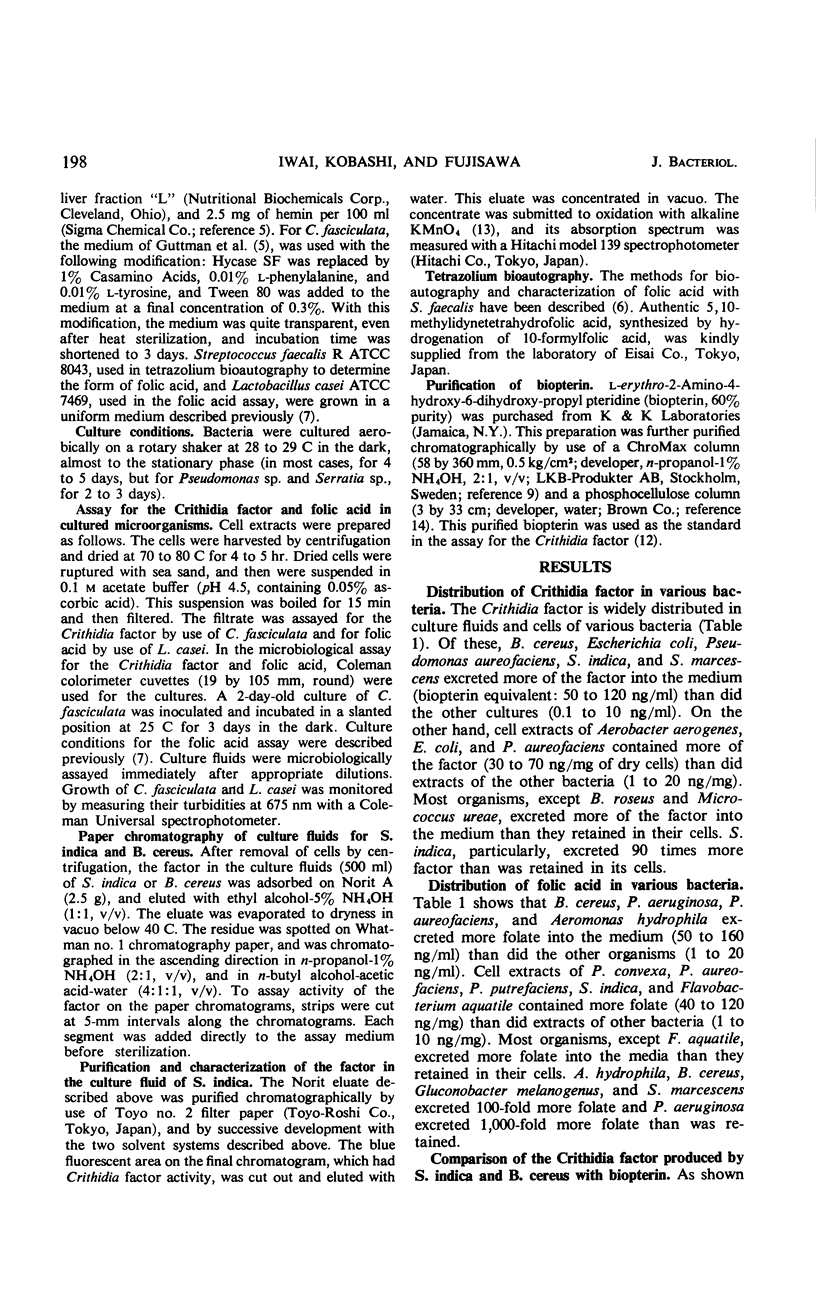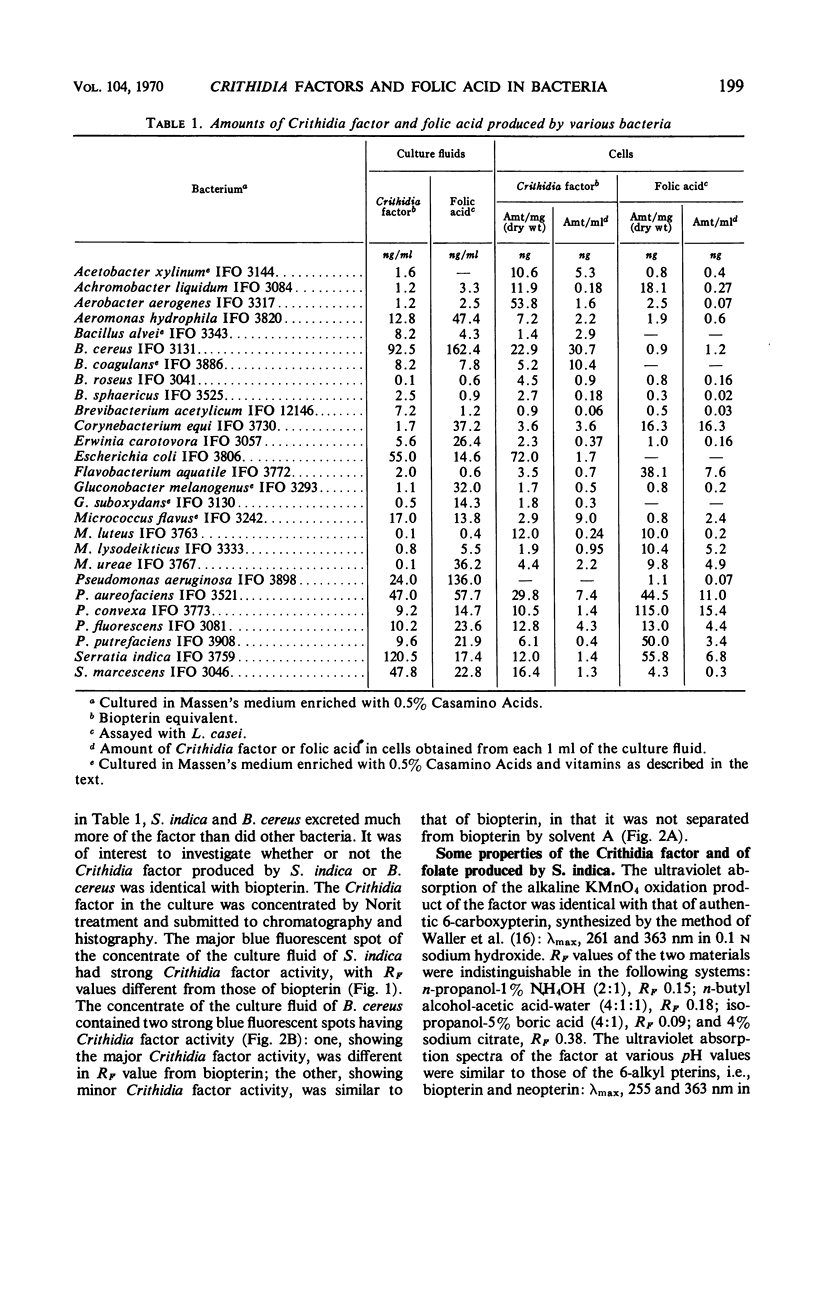Abstract
Crithidia factors and folic acid were found to be widely distributed in culture fluids and in cells of 27 species of bacteria, when cultured under aerobic conditions into the stationary phase. Most bacteria excreted more Crithidia factors and folic acid than they retained in their cells. One Crithidia factor produced by Serratia indica and one produced by Bacillus cereus differed from biopterin in their chromatographic behavior. The factor excreted by S. indica appeared to be a 2-amino-4-hydroxy-6-substituted pteridine on the basis of KMnO4 oxidation and ultraviolet absorption spectra. One of the folate compounds excreted by this organism was shown to be identical to 5,10-methylidynetetrahydrofolic acid by bioautography.
Full text
PDF




Selected References
These references are in PubMed. This may not be the complete list of references from this article.
- BROQUIST H. P., ALBRECHT A. M. Pteridines and the nutrition of the protozoon Crithidia fasciculata. Proc Soc Exp Biol Med. 1955 May;89(1):178–180. doi: 10.3181/00379727-89-21749. [DOI] [PubMed] [Google Scholar]
- BUTENANDT A., REMBOLD H. Uber den Weiselzellenfuttersaft der Honigbiene, II. Isolierung von 2-Amino-4-hydroxy-6-[1,2-dihydroxy-propyl]-pteridin. Hoppe Seylers Z Physiol Chem. 1958;311(1-3):79–83. [PubMed] [Google Scholar]
- HUTNER S. H., LEVIN H. L., NATHAN H. A. Independent requirements for crithidia factor and folic acid in a trypanosomid flagellate. Nature. 1956 Oct 6;178(4536):741–742. doi: 10.1038/178741a0. [DOI] [PubMed] [Google Scholar]
- Rembold H. Biologically active substances in royal jelly. Vitam Horm. 1965;23:359–382. doi: 10.1016/s0083-6729(08)60385-4. [DOI] [PubMed] [Google Scholar]
- WACKER A., LOCHMANN E. R., KIRSCHFELD S. Uber das Vorkommen und den Stoffwechsel von Biopterin. Z Naturforsch B. 1959 Mar;14B(3):150–151. [PubMed] [Google Scholar]


